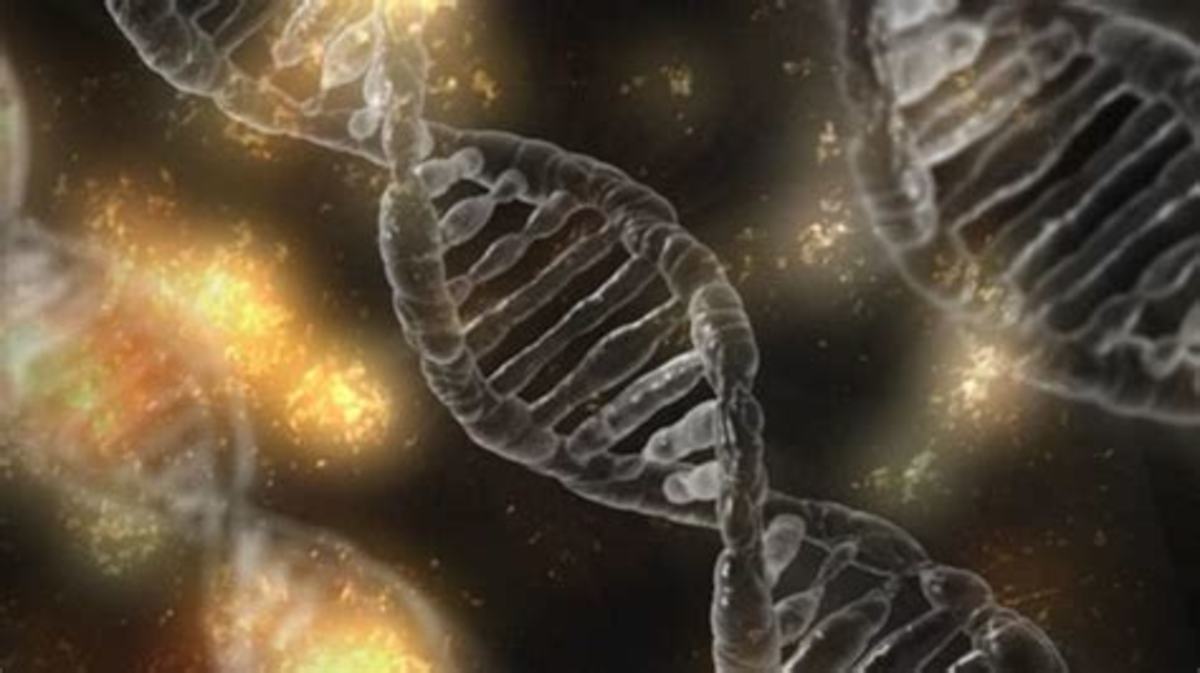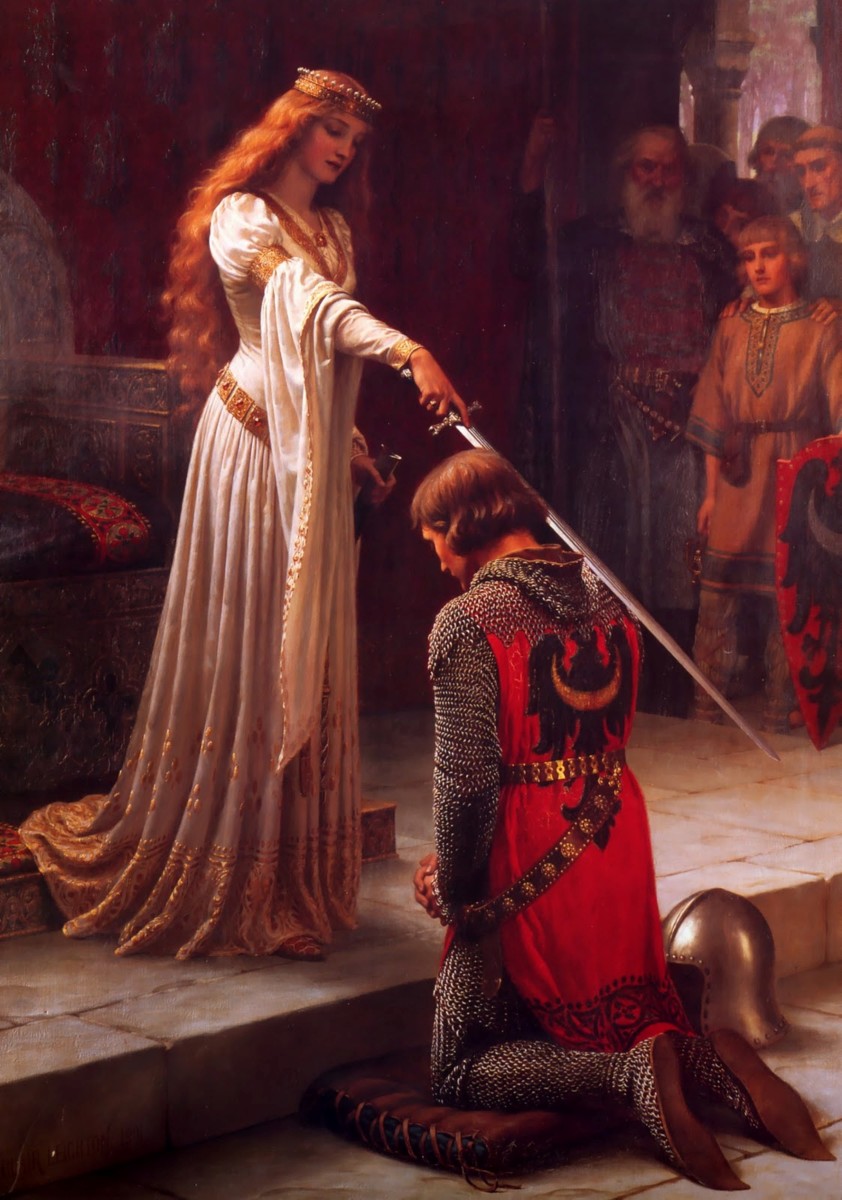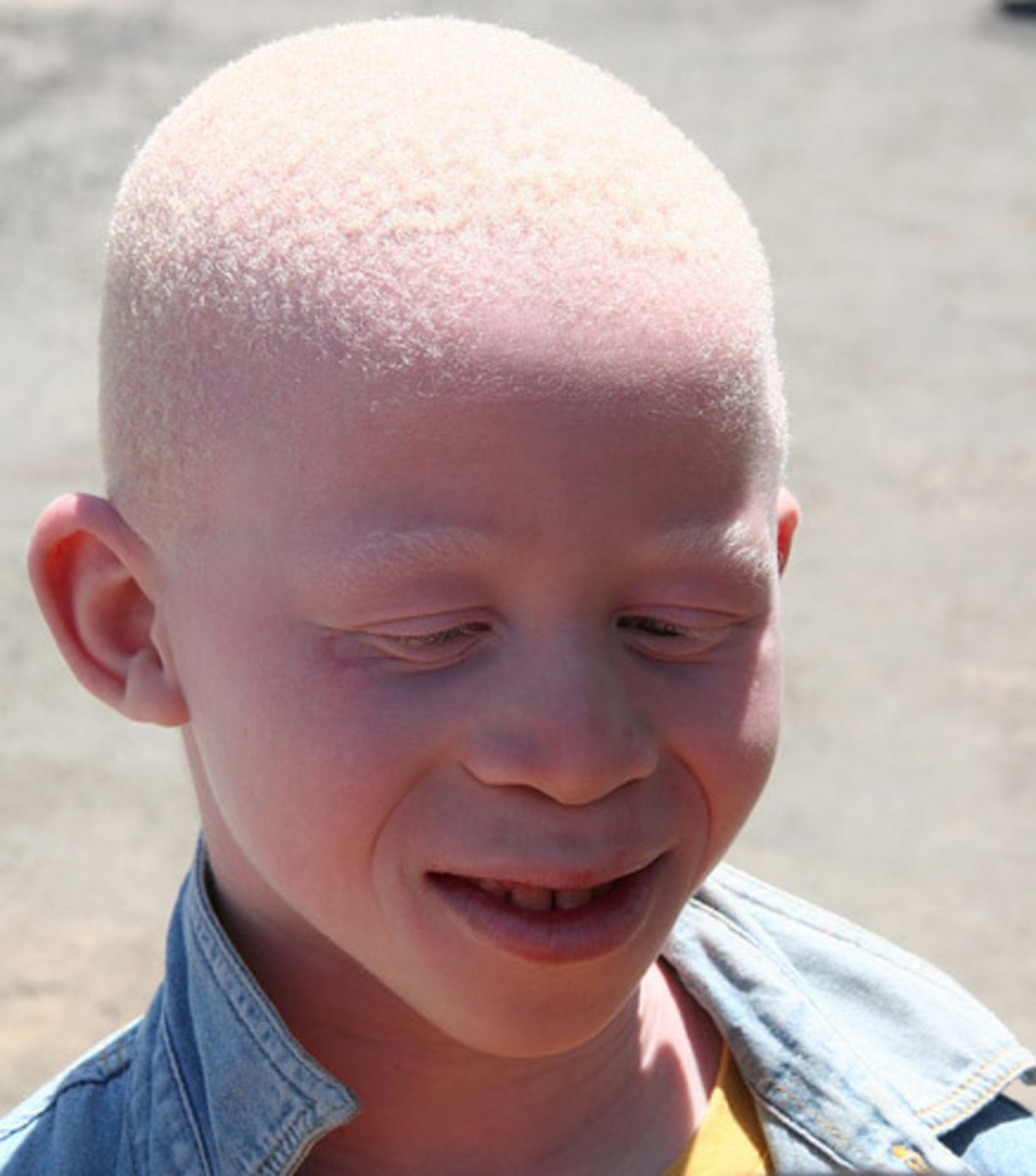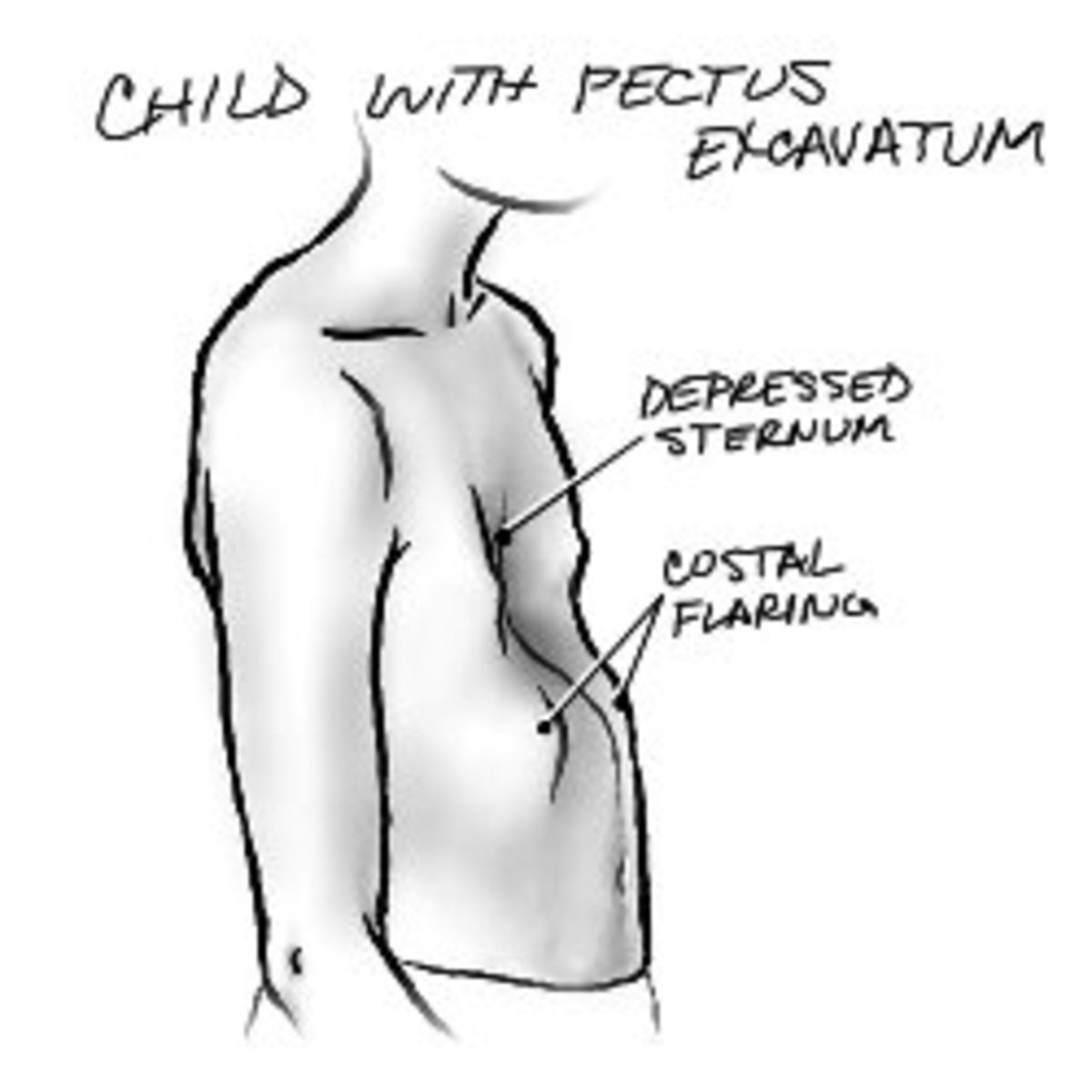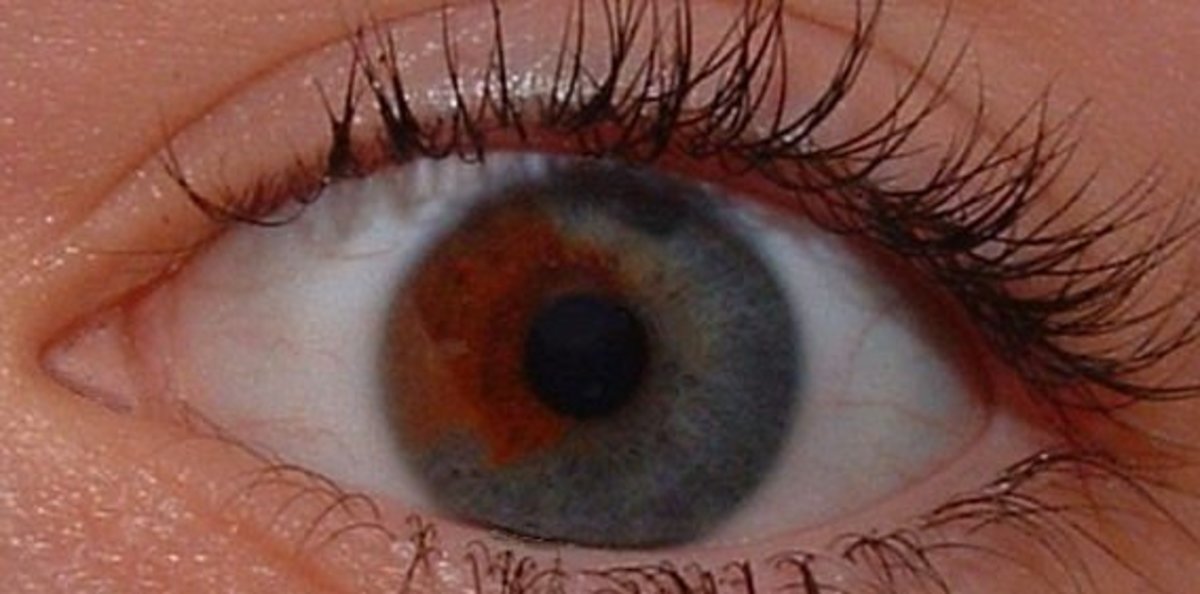Genetics And You (and me): Interesting Things to Know
CREATION OF A NEW HAPLOTYPE

IF YOU KNEW YOUR PATERNAL HAPLOGROUP WAS - E1b1b1a2*-, WHAT WOULD YOU KNOW
HAPLOGROUP? WHAT'S A HAPLOGROUP? Since this topic area is genetics, many of you probably know already; but, just in case, a Haplogroup is
"... a group of similar haplotypes that share a common ancestor having the same single nucleotide polymorphism (SNP) mutation in all haplotypes"
And a Haplotype is:
"... in genetics, [a Haplotype] is a combination of alleles (DNA sequences or genes of a unique kind, e.g. an allele for brown eyes) at adjacent locations (loci) on a chromosome that are inherited together..."
and
"A Haplotype may be one locus, several loci, or an entire chromosome depending on the number of recombination events that have occurred between a given set of loci."
And finally, recombination is
Genetic recombination is the production of new combinations of alleles, encoding a novel set of genetic information, e.g., by the pairing of homologous chromosomes in meiosis, or by the breaking and rejoining of DNA strands, which forms new molecules of DNA. (The picture to the right is recombination)
How did I find out my Haplotype was E1b1b1a2*? Through a company I heard about when listening to POTUS on Sirius/XM; it is called 23 and Me. You send them your spit (plus $100) and they report back an amazing amount of information about you including your Haplogroup from both your father's side and mother's (X2b).
With these two bits of information and a huge amount of research others have done for you, you can trace back, generally, to your geographic roots some 25,000 to 50,000 years. For example, if you look at the map below, you can see the migration of my ancestors.
WHERE IN THE WORLD ...?
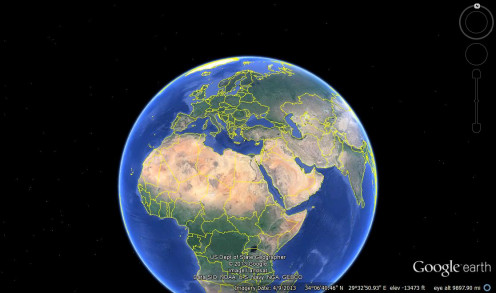
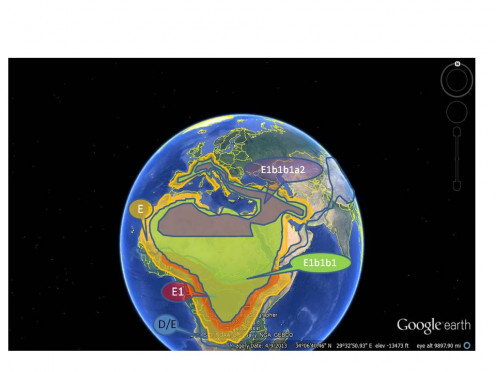
FIRST THERE WERE ADAM (Y-CHROMOSOME) AND EVE (mtDNA)
WE WILL CONSIDER ADAM FIRST, because a male is made up of an X and Y chromosome, recombination on the Y-chromosome passes down only from father to son; the X gets passed randomly to all off-spring. The map above only depicts my basic haplogroups, beginning with the "D/E" haplogroup. D/E, however, wasn't the first haplogroup, A was (you know, Adam?) and they lived in the western through southern parts of Africa, say Ethiopia down to South Africa today.
Through recombination, some of the A mutated into B, C, D/E, and F. From the F haplogroup sprang, overtime, G through K; and from K we get L through P; and finally from P, there followed Q and R. You can follow this tree and see a great map at this college site.
The map above depicts the spread of the E haplogroup from the D/E parent. I tried to layer it so that you could see the different territories to which each migrated. The layers work as follows:
- D/E - Blue and covers Sub-Saharan Africa down to South Africa and over to East Asia, for some reason
- E - Yellow and can be found in Africa, the Middle East, and Europe
- E1 - Orange and is located in Sub-Saharan Africa
- E1b, E1b1, E1b1b, E1b1b1 - Green and covers roughly the same territory as E
- E1b1b1a, E1b1b1a1, E1b1b1a2, E1b1b1a2, E1b1b1a2* - Purple and can be found in Northern Africa, the Middle East, and Europe.
GUESS WHERE MY LINEAGE IS FROM?
YEP, GERMANY, FRANCE, AND ENGLAND; at least back to the 1500s on both sides of my family. I thought for a while I was related to George Mason IV of Declaration of Independence fame, but it turns out my many great grandmother Mary Mason wasn't the right Mary Mason as they had it in Ancestry.com (a fabulous site, by the way). I am having more luck in proving a non-blood relationship to Mark Twain, however ... maybe my mother was right after all. Anyway, from 23andme.com analysis of my DNA, they came up with the following distribution of where I came from, chromosome by chromosome. (My apologies ahead of time for my poor chartsmanship, I wasn't able to cut-and-paste from the website.
MY CHROMOSOMES AND WHERE I COME FROM
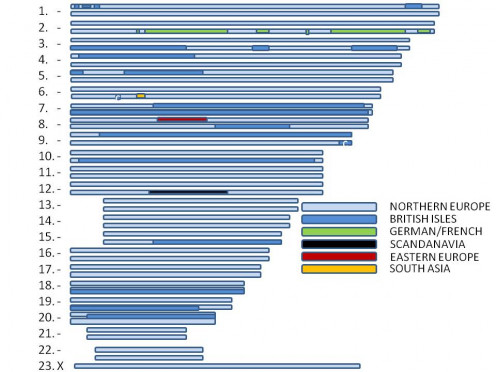
INTERPRETATION
The lightest blue means that genetically, virtually all of my genetic code originates somewhere in Northern Europe up to at least 500 years ago. There was some ancestry from Eastern Europe being expressed on Chromosome 8 (red segment) and little snippet from South Asia on Chromosome 6 (orange segment).
Within Norther Europe, the darker blue shows that most of my ancestry came from the British Isles with the next larger group in green coming from Germany and France. This matches up with what I have found in my genealogy research; my father's ancestry traces back to England while my mothers traces to Ireland, England, Germany, and France. There is also a little from Scandinavia (black segment on Chromosome 12), but I haven't found anyone from there yet.
NOW HOW ABOUT YOU?
I THINK I CAN START YOU OFF ON THE RIGHT PATH AT LEAST. IF YOU ARE NATIVE DESCENDANT FROM:
- the American's, both North and South as well as East Russia, your Haplogroup is probably a Q
- Native Australian, Pacific Islander, North America, East and Central Russian, Southeast Asia, and New Guinea, your Haplogroup is probably a C
- New Guinea and associated islands, see Haplogroup K and M
- Southeast Asia, then your Haplogroup may be O
- Northern Tier of Russia, try N as your Haplogroup.
- EUROPE will get you Haplogroups E, I, R,
- the Balkens and the Middle East, the Haplogroups are J and small portion of many others.
- the West Asia and India, the Haplogroups could be L, H, O, R
- Africa, will produce Haplogroups A, E, R, J
EVOLUTION HAPPENING
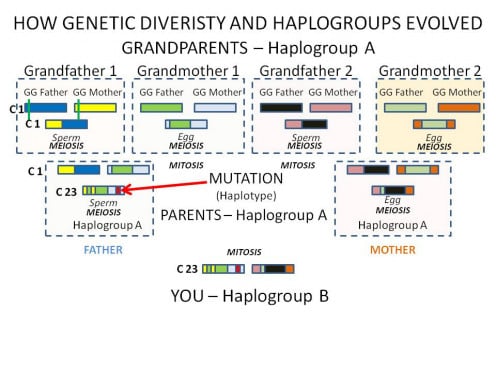
ABOVE IS MY ATTEMPT TO SIMPLIFY A VERY COMPLEX SUBJECT. In doing the research on this, I found that as soon as you get passed the first few sentences, you are into the whole new language of genetics with words that are very hard to pronounce, especially in succession like single nucleotide polymorphism (SNP -pronounced Snip- if you look at the picture at the beginning of this hub, you will see a pictorial of a SNP). But, in the end, it is how we became as diverse a population as we are today that I hope you can gather from the chart above.
The Chart shows two processes going on simultaneously, meiosis and mutation. Meiosis is the process of reproduction, where the end result is a new, unique individual produced from two other different and unique people. A mutation is something that changes in the genetic make-up that wasn't supposed to happen and gets passed on during meiosis. If the change is benign and doesn't cause the death of the embryo, fetus, or new human and is allowed to propagate, then we have a new Haplotype and Haplogroup. (A third term on the Chart is Mitosis, the normal process of cell division where the new cells are copies of the old one.)
At the top of the Chart above you should see four groups of with three bars in each, with tho of the bars being solid color. Each pair of colored bar represents one chromosome from one great grandparent, one from the great grandfather and the other from the great grandmother. In meiosis, unlike regular cell division, an identical copy of a chromosome is made so that there are two of the same chromosomes available for reproduction.
Now, my head still hurts from figuring this meiosis process out and I am not going to try to explain it in this hub, maybe another, but not this one. Suffice it to say that at the end of the process several things have happened: 1) cells of each parent as undergone meiosis which results the genes from one of their parents chromosome having "crossed-over" with similar genes from the other parents chromosome and 2) since there are a total of four chromosomes, two from the mother and two from the father, two sets of unique chromosome nuclei will result, each containing a chromosome from each parent, 3) these nuclei split again forming four nuclei, each containing one unique chromosome, thus establishing diversity and creating something different than the original, 4) if this process is happening in a male, then the four nuclei end up becoming sperm; if it is a female, then, by lottery, one of the four become an egg and the remaining three parish.
After this, things get much simpler. Mom meets dad, has sex, mom gets pregnant and one of those sperm invade one of those eggs, each with a single chromosome (a haploid) and creates a fertilized egg (a diploid). Through normal "mitosis" the egg divides and out pops a baby some nine months later that is unique from either parent.
LET'S DIG A LITTLE DEEPER into that Chart above. You will notice I labeled the solid colored bars, and each subsequent bar below them, 'C 1"; this stands for Chromosome 1, the longest chromosome of the 46 a human has. If you focus on Grandfather 1 you see inside the box a chromosome from his father (your great grandfather) and his mother (on the right). Together, they form a "homologous" chromosome pair (well, at least that is what they become during meiosis anyway; before that, they are going their own separate ways.) They are homologous because when you line them up side-by-side, the gene sequence, of which each is made, line up with each other as well.
For example, for Grandfather 1, you should notice a vertical green line on the left end of both the father's and mother's C 1 chromosome. Assume the little segment to the left of the line is the gene for "eye" color; blue for the father and yellow for the mother (maybe that means the baby will be green-eyed). Now, if you rotate the blue and yellow C 1's clockwise so that they are next to each other, you will see the two eye-color genes are opposite each other. The same will be true for each of the thousands of genes (all colored blue or yellow for simplicities sake) that are on chromosome C 1.
Now, in a very complex dance during meiosis, a strange thing happens; genes from the father's chromosome "cross-over" to the mother's, and vice versa. The end result of this dance is a brand new C 1 that is contained in the grandfathers sperm. This why you now see C 1 has part blue and part yellow. The same thing happens with the grandmother except she produces eggs.
When Grandpa and Grandma decide to have fun and produce your Father, the sperm and the egg merge and, through the much simpler process of mitosis, produce the C 1 chromosome pair of your father, one chromosome from your grandpa and one chromosome from your grandma. The same process is going on, of course, with what ultimately ends up being your Mother from Grandpa 2 and Grandma 2.
At the point your future parents reach puberty, meiosis begins in them, producing unique sperm and eggs as already described. Then, sooner or later, you pop out as the result of the union of your parents. Notice how complex your C 1 is now compared to the solid bars we started with only two generations ago! ... that is biodiversity.
ANOTHER WAY TO ACHIEVE GENETIC DIVERSITY - MUTATIONS
AT THE START OF THIS HUB, I introduced strange sounding words like "Haplotype", "Haplogroup", and "recombination". In the title is the word "mutation", which in this case means "...is a change of the nucleotide sequence of the genome of an organism...". According to the source in Wikipedia, 70% of the mutations that actual cause a change in protein production, they are harmful to the organism and often end up killing it. The remaining 30% are either neutral in their effect of weakly beneficial. Once in a great while, however, they can be strongly beneficial to the organism.
In the picture at the top of this hub, you see a change in genetic sequence from the base-pair of C-G in the DNA sequence on top, to T-A in the one on the bottom.. Let's define, for arguments sake that our original haplotype 1 was the sequence C G T A T A, but it mutated into a new Haplotype 2 of T A T A T A (no pun intended). Now, at this point, we don't know if Haplotype 2 is bad, good, or indifferent.
If the mutation is lethally bad, it will not pass on to future generations. But, if it is non-lethally bad (at least before puberty), benign, or good, it will pass on. Further, if these mutations which are passed along occur on the long end of the Y-chromosome, # 23 in men, or the mitochondrial DNA (mtDNA) in women (wouldn't you know it, the mitochondrial is the structure within all cells which provides the power for it to operate and is also used to trace female lineage), then a new Haplogroup is born. What makes mtDNA special, is that it is not contained on a chromosome and is not part of the meiosis cycle; Instead, it is its own entity, contained in large numbers in the mother's egg and, interestingly enough, (this a bit sexist if you ask this male) any mtDNA that enters with the sperm is quickly killed by the mother ... bummer. Consequently, mtDNA is replicated via mitosis, simple cell division, instead of meiosis.
If you consider the father's sperm chromosome labeled 23, meaning the Y-chromosome in the sperm, there is a little red bar that isn't seen anywhere before it; this is a mutation and has created a new haplotype. Because I put it on the Y-chromosome, and more specifically on the long end of that chromosome, a new haplogroup is born as well. The reason for this is that the long end of the Y-chromosome rarely, if ever, crosses-over with any part of the X-chromosome and is therefore always passed along the paternal line. The same is true for any mutation in the mtDNA, that is always passed along on the maternal side. If a mutation occurs anywhere else, it is impossible to tell from whence it came because of the randomness in meiosis, so no new haplogroups are formed, although new haplotypes will be. Finally, since the Y-chromosome shows up in you, you are a male of Haplogroup B.
So, applying this to our haplogroup tree, the tree created from the Y-chromosome which we are discussing in this hub, we find that I would be the 4th mutation since Adam. If there had never been any mutations, I think we would all be Haplogroup A (someone please correct me if I am wrong); but there were mutations. The first one resulted in Haplogroup B; the second in the same haplotype, generated Haplogroup C, the third, produced Haplogroup D/E, and finally (for me anyway) the fourth mutation, in a different location separated Haplogroup D from mine, E. The rest of my male haplogroup identification comes from mutations within the Haplogroup E chain.
I hope this has been somewhat understandable and interesting to you, personally, in true INTP fashion, I find it fascinating. Below is a great YouTube video that does a wonderful job explaining how mitosis and meiosis works.
FINAL THOUGHTS
23 AND ME HAS BEEN QUITE an eye-opener! There is so much to talk about but I am only going to mention a couple of things to whet your appetite. 23 and ME does a complete genetic work up on you performing a comprehensive analysis of your DNA, all 900,000 or so SNPs. From it, they are able to tell you an amazing amount of information about You. For example:
- I have a 17.9% chance of having Venous Thromboembolism, which can lead to pulmonary embolism, which has a normally deadly outcome. The normal chance someone from the general population is 12.3%
- I have a slightly higher risk of becoming an alcoholic; they got that one right, I am a recovering alcoholic and both of my parents were alcoholics, but my paternal grandparents were not, nor was my maternal grandmother; I don't know about my maternal grandfather.
- I have a genetic variant for Alpha-1 Antitrypsin Deficiency, which makes me more susceptible to lung issues like emphysema.and liver problems. If I smoked, which I did until 1985, exacerbates the problem even further. While my liver is fine, even with 35 years of heavy drinking, my doctor has worried for the last couple of years of my developing COPD.
I can't do much about the alcoholism thing, other than continue not to drink, but I will be sharing these results with my doctor regarding the thrombosis and the COPD. And this was just the tip of the iceberg that was released by 23 and Me!
If you are interested in joining the 23andMe group, click here:23andMe
POSTSCRIPT
RECENT DEVELOPMENTS SINCE I WROTE THIS:
- The FDA has barred 23andMe and similar companies from publishing their interpretation of health aspects of your genetic code as being unreliable and misleading. As it relates to 23andMe, I am here to tell you, nothing could be further from the truth. 23andMe goes to great pains to make sure the user is well aware of the uncertainty involved in interpreting the results and gives you the reports to back up whatever interpretations they provide. Personally, I think the FDA is being lobbied into this ruling.
- That said, 23andMe can provide the raw data which can easily be interpreted, even more thoroughly by programs like Prometheous.com for $5. While my results were before the ban, I tried it anyway to make sure it worked; I am glad I did for the wealth of information there was amazing.
- I have found my first real 4th cousin through 23andMe. We share the same great, great, great grandfather on my dad's side and have added them to my tree. While it is the daughter, 5th cousin, once removed, it is her mother I actually share genetic code with on my 4th chromosome.
- I may have just found a 4th cousin on my mothers side as well. Along with sharing common DNA on the 1st chromosome, we also share the same haplogroup of X2b which is passed down through the mtDNA in the mother's egg. That should mean we have a great, great, great grandmother in common. I sent her her name and am waiting for a reply to see if she knows her.
I Would Like To Know
Did This Hub Make Sense to You?
Have You Heard of 23 and Me Before?
Did This Hub Tweak Your Interest In Having Your Genome Checked Out?
- Genetics and Chromosomal Influences
Do you ever wonder what makes you an original individual? Genetics play a major role. However environmental influences have a great impact as well. - I Was Born This Way: Temperament and Genetics
Many of our personality traits are based on temperament, which is strongly influenced by genetics. Essentially, I was born this way! - Genetics and Genealogy – Our Story and My Genetic ...
Genetics can reveal the real story behind family lore. Here is how we dug back farther in time using genetic testing - and my reviews of the the genetic testing firms we used. - Gregor Mendel, the Father of Genetics
The - Blood Types: History, Genetics, and Percentages aro...
Prior to the discovery of blood groups, blood transfusions were often deadly. Physicians attempted the use of milk and animal blood as an alternative to human blood, but met with limited success: the discovery of blood types allowed modern transfusio - God's "Word" vs Homosexuality: Living In The Dark Ag...
The reaction by Southern Baptists to the Boy Scouts to let gay teenage members - How to Develop Your Own Personality? Understand Your...
The Myers-Briggs Typ Indicator personality profiles are a very power tool in understading yourself, others, and the interaction between you and others. This hub is an introduction to MBTI via the question -
© 2013 Scott Belford

